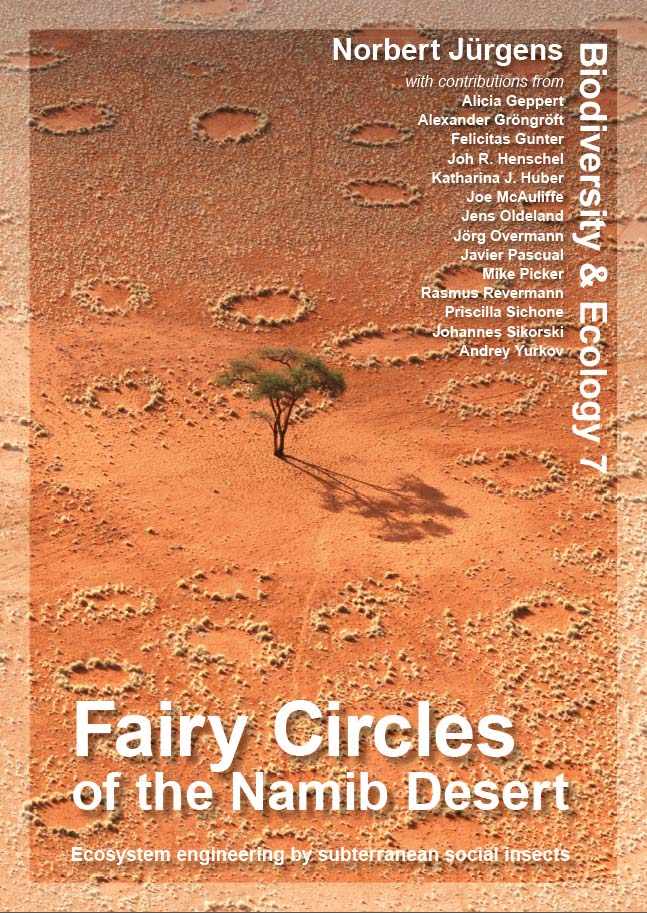
|

Department of Biology Institute of Plant Science and Microbiology |
| Division BEE > Biodiversity & Ecology > Vol.7 > Article 9 |
Biodiversity & Ecology
Journal of the Division Biodiversity, Evolution and Ecology of Plants , Institute for Plant Science and Microbiology, University of Hamburg.
9 Patterns Book chapter 9 Patterns resembling fairy circles Abstract: The fairy circles of the Namib as introduced in Chapters 3 to 6 are frequently confounded with a variety of similar bare patches in the vegetation. For example, the bare discs caused by harvester ants in the Kaokoveld or eroded heuweltjies in the Richtersveld are often interpreted as fairy circles. Therefore, we regard it as important to present these similar vegetation patterns, plant morphologies and soil structures, some of which have not been published previously, and to explore the involved processes in some more detail. Compared to the earlier discussed products of ecosystem engineering by insects, some patterns presented here are uncharted territory without elaborated and proven hypotheses. In Chapter 9 we start with those structures which always appear as a circular bare patch in the centre of the structure. Regular isolated spots of vegetation are sometimes regarded as the opposite of fairy circles. At a closer look, they turn out to be related to at least two different environmental factors and potential causative processes. Polygonal patterns of linear vegetation are related to convective soil movements caused by soluble salts and especially gypsum.
Suggested citation: |
